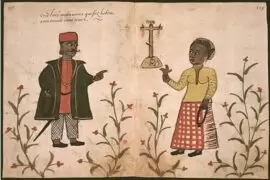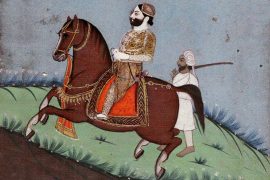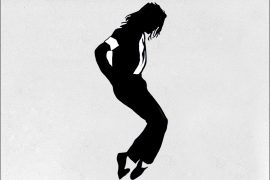The dangers of Tobacco are well known today. Chewing or smoking Tobacco has serious health consequences; its prolonged use can cause many kinds of cancers, including lung and mouth cancer.
Tobacco has also been linked to other diseases, which may vary based on the gender and age of the smoker. However, did you know that tobacco was used as a plant medicine until it fell from grace and became popular for its non-medicinal purposes?
When Columbus reached the Americas in search of India, he called it the New World, for the world was full of resources and unknown possibilities. He met with the Natives and believed them to be Indians. He kept a small diary and noted small details of their civilisation.
As per his diary, on 15 October 1492, Columbus witnessed Tobacco for the first time. He saw an ‘Indian’ riding in his canoe, carrying a bunch of dry leaves valued for their medicinal properties. A month later, his men travelled to Cuba. There, they found that many natives carried a burning stick to kindle fire and release a perfume with a specific herb. He noted that the same herb was rolled in a cylinder and smoked to lessen fatigue and disinfect wounds.
Tobacco was introduced into Europe as a ‘beautiful’ plant in 1492, but it rapidly gained a reputation as an excellent medicinal herb. Spanish sailors and chroniclers saw and documented the widespread use of tobacco by American Indians in spiritual, social, and medical rites.
European herbalists believed that most plants in the New World had medicinal characteristics based on indigenous medical applications. Ergo, by the end of the sixteenth century, tobacco was commonly used to treat a variety of diseases throughout Europe. Even medical authorities pushed tobacco as a cure-all for over sixty-five different illnesses.
Cabral, a Portuguese traveller, wrote in 1500 about how Indigenous Brazilians used a medicinal herb named betum, later recognised as tobacco, to cure various diseases such as abscesses, fistulas, ulcers, and polyps.
In 1535, Oviedo y Valdes, the first official historian of the Indies, published ‘The General History of the Indies,’ in which he documented the Indians’ use of tobacco as a medication. He also wrote about how some Spaniards on the island used it to treat syphilis, which was unknown to Europeans until then.
Oviedo was the first to use the term ‘tabaco’ in print. Tabaco was the term Hispaniolans gave to the apparatus used to inhale the herb’s smoke or powder. Later, the name tabaco (or tobacco in English) came to refer to the plant itself.
Tobacco became so popular in Europe that the literature on it grew multifold; by 1600, over 100 books had been published on tobacco’s value as a medicinal plant. The most important study on the medicinal use of tobacco was written by Nicolas Monardes, a prominent physician and medical advisor to the Archbishop of Sevilla.
Monardes’ article, published in Spanish in Sevilla circa 1565, was often cited and translated into various languages — including English in 1577. Eventually, it became the primary source of information on tobacco.
Monardes then went over a list of all the ailments that might be cured by smoking, chewing, or drinking tobacco or by applying heated leaves or ointments to the skin. Tobacco syrup, he wrote, reduced breast discomfort; warmed leaves, salves, and clysters, he noted, were used to treat internal congestion, stomach aches, constipation, kidney stones, and gas.
‘A hot leaf of the plant is applied to the navel for pregnancy and delivery pain,’ he noted. To eliminate worms, use tobacco, he instructed. He also recommended tobacco for rheumatism, abscesses, toothache, and toxic wounds. Moreover, he believed tobacco therapy was effective in stopping any blood flow.
Monardes advocated tobacco as a home remedy, and it was mainly due to his influence that the new plant became one of the most popular cures among experts and laypeople alike. As per Monardes, tobacco could cure sixty five different diseases and conditions.
In France, Tobacco came to be known as the “Queen’s Herb.” Queen Catherine De Medici had become a great advocate of tobacco. She treated her son Francois II’s illness with tobacco, but it was generally believed that the tobacco ointment poisoning caused his death. Yet, tobacco was widely popular among physicians and laymen.
“Tobacco will heal all old sores and cancerous ulcers, ringworms, great scabies, and what evil so ever may be, by stamping the leaves in a clean mortar and applying the herb and juice together upon the sore,” wrote a physician.
Countries had also started using tobacco as a weapon to scupper trade. For instance, when the Spaniards controlled the tobacco trade, King James imposed high duties intending to suppress the trade in England. However, in 1614, as the plague outbreak resulted in high demands, doctors declared that smokers were less likely to be infected with the plague and that tobacco acted as a disinfectant. Ergo, Tobacco was smuggled from Spain and even cultivated in parts of England.
Before 1600, only a few medical authorities warned of the drug’s harmful effects. England was the only country that treated tobacco as a recreational drug rather than as a medicine. It was fashionable to smoke during Queen Elizabeth’s reign, popular amongst all classes of society. By the eighteenth century, everyone used tobacco more for pleasure than as medicine.
Studies on the poisonous effects of tobacco were initiated in the seventeenth century, but no solid opposition to its use was found. Many figured that tobacco did not act as a cure as claimed for many diseases. They also realised the harmful effects of nicotine.
In the eighteenth century, tobacco was related to lip cancer. However, the tobacco industry grew increasingly through the late nineteenth and early twentieth centuries. A sharp increase in smoking was seen among women after World War II.
During this time, statisticians began noticing a rise in lung cancer. An extensive study of the drugs had hence begun. By the 1950s, tobacco was identified as a serious health hazard. Later, a direct relationship between tobacco use and lung cancer followed. Scientists also presented results that drew a connection between the number of cigarettes, the age of the smokers, and indirect inhalation with their mortality.
A 1979 report declared that smoking affected mortality and that passive smoking was also a health hazard. Many organisations and research committees conducted extensive research to prove what has become a known fact today: ‘Tobacco Kills.’
-30-
Copyright©Madras Courier, All Rights Reserved. You may share using our article tools. Please don't cut articles from madrascourier.com and redistribute by email, post to the web, mobile phone or social media.Please send in your feed back and comments to [email protected]











